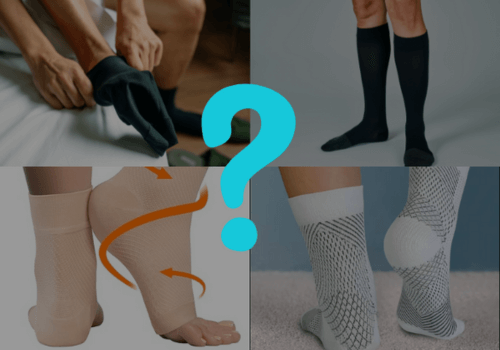
5 Common Myths About Compression Socks
If you’ve been told compression socks can’t help with foot pain… you may have been misled.
In fact, following outdated advice about compression socks could actually be making your discomfort worse.
Because here’s the truth:
Compression socks can provide real relief — but only if you understand how to use them properly.
Unfortunately, too many people fall victim to these 5 Dangerous Myths that sabotage their results.
Curious what they are?
Truth: There are many different types of compression socks, each designed for unique needs.
For example, StepEase socks use five-zone compression technology — a specialized design that provides targeted pressure to areas prone to pain, like the arch and heel. This ensures better support, improved circulation, and faster relief for conditions like plantar fasciitis or neuropathy.
Standard socks won’t deliver this kind of precision support — and choosing the wrong type could mean missing out on lasting relief.
Tip: Look for socks designed with distinct pressure zones to target your foot’s problem areas.
Myth 4: Wearing Compression Socks Is Complicated

Myth 5: The Benefits of Compression Socks Don’t Last Long
Truth: While some people believe compression socks only offer temporary relief, the truth is that consistent, proper use can provide long-term improvement.
StepEase socks are designed for durability, meaning their compression zones maintain their strength wash after wash. Plus, when paired with complementary therapies like ComfySole insoles, you can accelerate recovery — reducing inflammation and easing pain for good.
Tip: Combining StepEase socks with ComfySole insoles can supercharge your recovery and improve your foot health faster than using either method alone.
How StepEase Compression Socks Will Change Your Life



